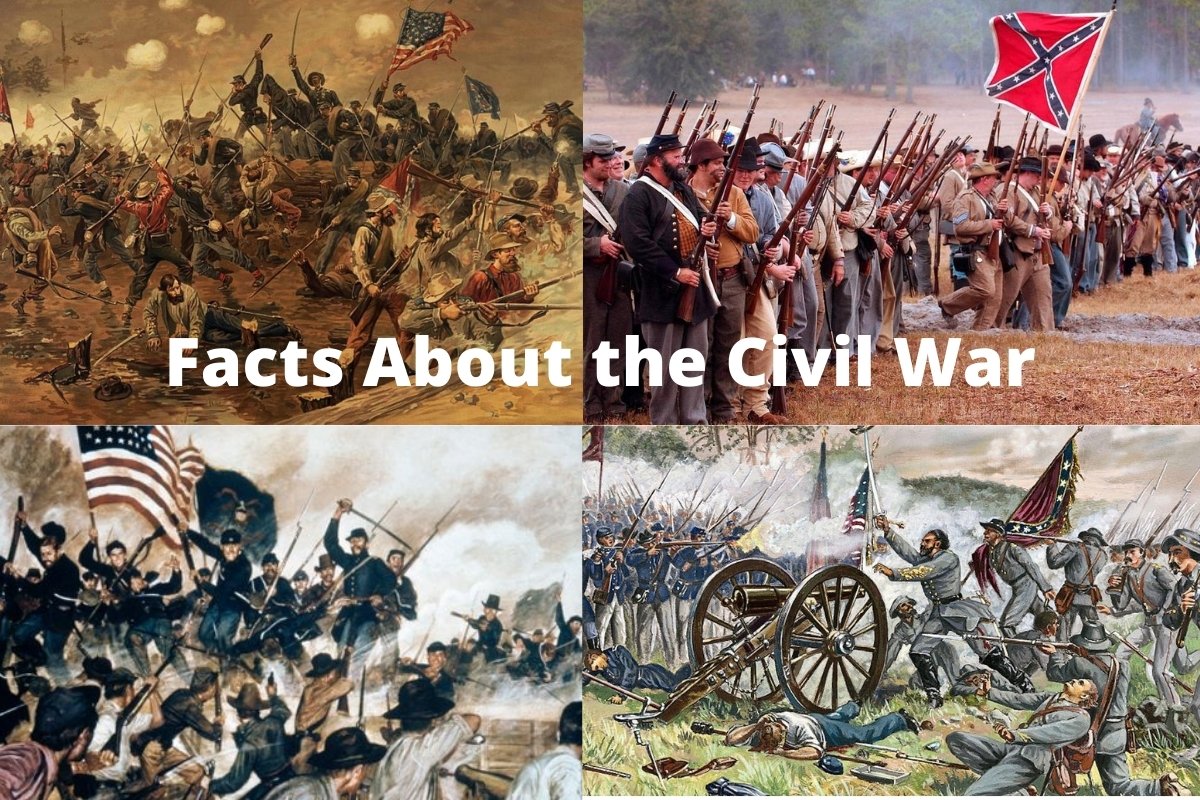The American Civil War, a four-year-long conflict from 1861 to 1865, is a pivotal chapter in United States history.
It was driven by deep-rooted issues such as slavery, states’ rights, and economic differences, leading to a deadly clash between the Northern and Southern states.
This transformative period featured significant battles, influential leaders like Abraham Lincoln, and groundbreaking developments in warfare.
The war’s legacy extended to the Emancipation Proclamation, total warfare strategies, and the challenging era of Reconstruction that followed.
Exploring the facts and events of this tumultuous time provides insight into the complexities of a nation torn apart and ultimately reunited.
American Civil War Facts
1. Occurred from 1861 to 1865
The American Civil War was a four-year-long conflict that occurred from 1861 to 1865. It officially began on April 12, 1861, when Confederate forces under General P.G.T. Beauregard bombarded and captured Fort Sumter in Charleston, South Carolina.
The war concluded on April 9, 1865, when General Robert E. Lee surrendered to General Ulysses S. Grant at Appomattox Court House, Virginia.
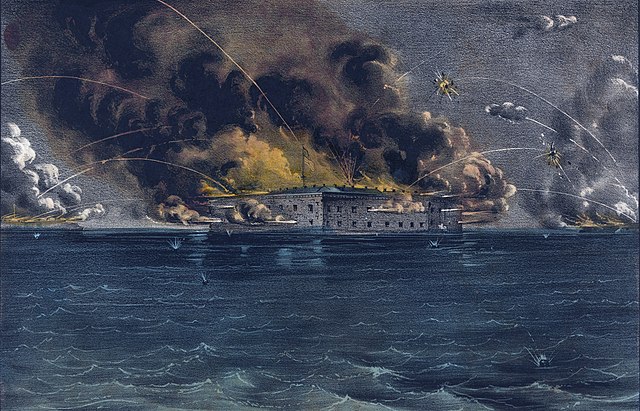
2. Rooted in disputes over slavery, states’ rights, and economic differences
The primary causes of the Civil War were deeply rooted in longstanding tensions between the Northern and Southern states.
Slavery was the most significant issue, as the South relied heavily on enslaved labor for its agricultural economy, while the North had largely abolished slavery and embraced industrialization. This fundamental difference in labor systems and economic structures led to intense sectional disputes.
Also Read: Famous People of the Civil War
States’ rights also played a role, as Southern states argued that they had the right to secede from the Union if they believed their interests were threatened. Many in the North, including President Abraham Lincoln, contended that the Union was perpetual and secession was illegal.
Economic differences were exacerbated by tariff policies and disputes over infrastructure investment. The North favored protective tariffs to support its industries, while the South, which relied more on trade, opposed such tariffs.
3. Began with the Confederate attack on Fort Sumter
The Civil War commenced with the Battle of Fort Sumter. Fort Sumter was a federal fort located in Charleston Harbor, South Carolina.
After South Carolina seceded from the Union in December 1860, tensions escalated when President James Buchanan refused to evacuate federal troops from the fort. This led to a standoff.
Also Read: Questions About the Civil War
On April 12, 1861, Confederate forces, under the command of General P.G.T. Beauregard, began bombarding Fort Sumter. After 34 hours of shelling, the Union garrison, led by Major Robert Anderson, surrendered on April 13, 1861. This marked the beginning of the Civil War.
The surrender of Fort Sumter galvanized both the North and the South. It prompted Lincoln to issue a call for troops to suppress the rebellion, and it led several more Southern states to secede and join the Confederacy.
4. Emancipation Proclamation in 1863 abolished slavery in Confederate territory
On January 1, 1863, President Abraham Lincoln issued the Emancipation Proclamation. This historic executive order declared that all enslaved people in Confederate-held territory were to be set free.
It was a pivotal moment in the Civil War and a significant step towards the abolition of slavery in the United States.
Also Read: Abolitionist Leaders
The Emancipation Proclamation did not immediately free all enslaved individuals since it applied only to Confederate territory.
However, it was a symbol of the Union’s commitment to ending slavery and had a profound impact on the war by altering its moral and strategic dimensions. It encouraged enslaved people to escape to Union lines and join the fight for their freedom.
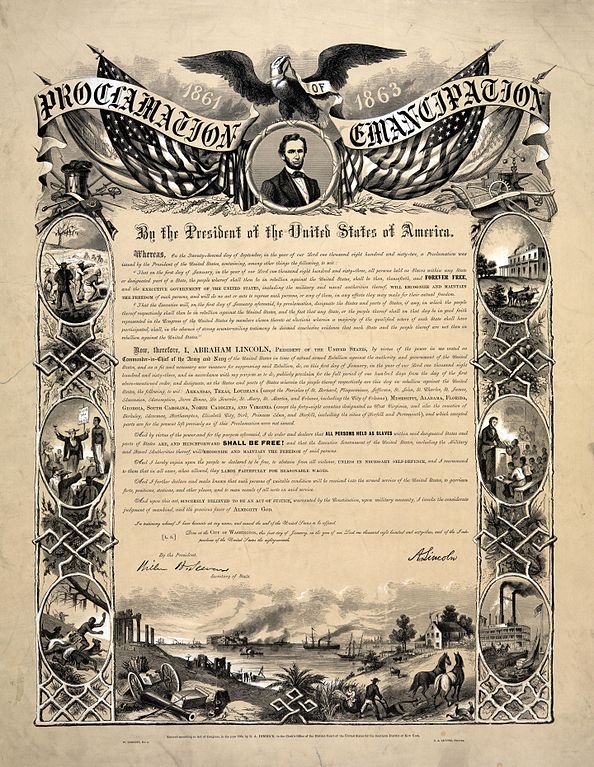
5. Marked a shift toward total war, targeting civilians and infrastructure
The American Civil War witnessed a shift towards a strategy of total war, where both the Union and Confederate forces targeted not only military objectives but also civilian infrastructure and resources.
Sherman’s March to the Sea is a notable example of total war. General William T. Sherman led Union forces on a destructive campaign through Georgia in late 1864. They intentionally destroyed railroads, factories, and homes to undermine the Confederacy’s ability to wage war.
Total war resulted in significant hardships for civilians on both sides, as entire towns and cities were devastated, and civilian populations suffered from shortages of food and supplies.
6. Major battles included Gettysburg, Antietam, Shiloh, Bull Run, and Vicksburg
The Civil War featured a series of major battles that had a profound impact on its outcome and the course of American history.
The Battle of Gettysburg (July 1-3, 1863) in Pennsylvania was one of the largest and bloodiest battles of the war. It ended with a Union victory and is often considered a turning point in the conflict.
The Battle of Antietam (September 17, 1862) in Maryland was the single bloodiest day in American history, with over 22,000 casualties. It ended in a Union tactical victory and led to Lincoln’s issuance of the Emancipation Proclamation.
The Battle of Shiloh (April 6-7, 1862) in Tennessee was a significant early engagement that showcased the brutality and scale of the war.
The First Battle of Bull Run (Manassas) in Virginia on July 21, 1861, was the first major battle of the war and shattered the initial belief that the conflict would be short and decisive.
The Siege of Vicksburg (May 18-July 4, 1863) in Mississippi was a pivotal Union victory that gave them control of the Mississippi River.
7. President Abraham Lincoln led the Union during the war
Abraham Lincoln served as the 16th President of the United States from 1861 to 1865, making him a central figure during the Civil War. He was the first Republican president and is widely regarded as one of America’s greatest leaders.
Lincoln’s leadership during the war was characterized by his commitment to preserving the Union. He believed that the United States was a perpetual union, and secession was illegal. He took significant steps, including calling for troops and issuing the Emancipation Proclamation, to achieve this goal.
Lincoln’s Gettysburg Address, delivered in 1863, eloquently articulated the principles of liberty, equality, and the importance of preserving the Union. It remains one of the most famous speeches in American history.
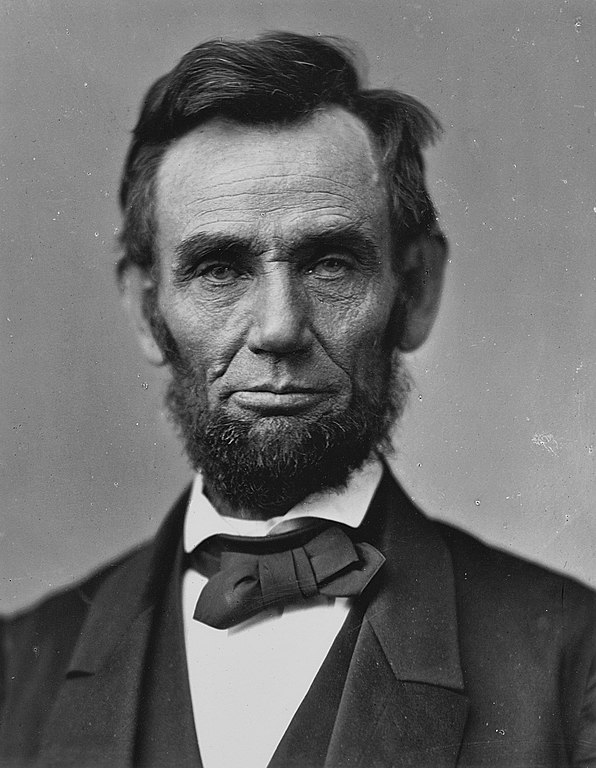
8. Prominent generals: Ulysses S. Grant, William T. Sherman, Robert E. Lee, Stonewall Jackson
The Civil War featured several prominent generals who played crucial roles in shaping the course of the conflict.
Ulysses S. Grant was a Union general known for his tenacity and strategic brilliance. He eventually became the top Union general and played a pivotal role in the Union’s victory.
William T. Sherman, another Union general, is famous for his “March to the Sea,” which cut a swath of destruction through Georgia. His tactics of total war contributed to the Union’s success.
Robert E. Lee was the commanding general of the Confederate Army of Northern Virginia. He is celebrated for his tactical prowess but ultimately surrendered to Grant at Appomattox in 1865.
Thomas “Stonewall” Jackson, a Confederate general, was known for his aggressive and effective battlefield tactics until his death in 1863.
9. Gettysburg Address emphasized liberty and equality
On November 19, 1863, President Lincoln delivered the Gettysburg Address during the dedication of the Soldiers’ National Cemetery in Gettysburg, Pennsylvania.
In this brief but powerful speech, Lincoln emphasized the principles of liberty, equality, and the idea that the Civil War was a test of whether a nation “conceived in Liberty, and dedicated to the proposition that all men are created equal” could endure. He called for a “new birth of freedom.”
The Gettysburg Address is considered one of the most important speeches in American history and is a testament to Lincoln’s ability to encapsulate the significance of the Civil War in a few powerful words.
10. Resulted in around 620,000-750,000 deaths
The American Civil War resulted in a staggering number of casualties. It is estimated that approximately 620,000 to 750,000 soldiers died during the war.
Many of these deaths were not due to combat but resulted from disease, infection, and unsanitary conditions in military camps and hospitals.
The high casualty rate was partly due to the scale and intensity of the conflict, as well as outdated military tactics and medical practices of the time.
11. Saw advancements in military technology
The American Civil War witnessed significant advancements in military technology and tactics, many of which foreshadowed modern warfare:
Rifled muskets replaced smoothbore muskets, increasing accuracy and range. This change had a profound impact on infantry tactics, as soldiers could fire more accurately from longer distances.
The use of ironclad warships marked a revolution in naval warfare. The USS Monitor and the CSS Virginia (Merrimack) famously engaged in the first battle between ironclads in 1862, changing the course of naval warfare.
Balloons were used for reconnaissance, providing valuable information about enemy movements.
The submarine CSS Hunley became the first submarine to sink an enemy warship when it attacked the USS Housatonic in 1864.
The widespread use of railroads allowed for the rapid movement of troops and supplies, making logistics and strategic maneuvering more efficient.
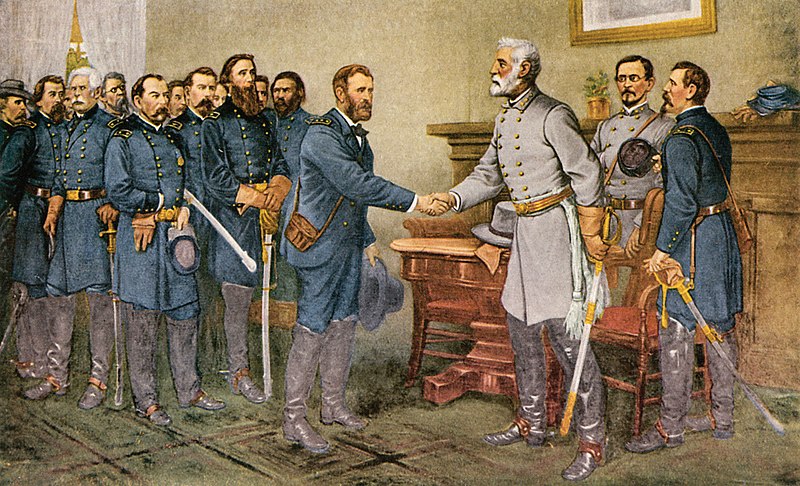
12. Ended with Lee’s surrender at Appomattox in 1865
The American Civil War effectively came to an end with the surrender of Confederate General Robert E. Lee to Union General Ulysses S. Grant at Appomattox Court House, Virginia, on April 9, 1865.
The terms of surrender were relatively generous, with Grant allowing Confederate soldiers to return home with their horses and mules. This approach was aimed at fostering reconciliation and reunification of the nation.
Lee’s surrender marked the practical end of the Confederacy’s ability to continue the fight, though some Confederate forces held out for a short time afterward.
13. Followed by the period of Reconstruction in the United States.
After the Civil War, the United States entered a period known as Reconstruction, which lasted from 1865 to 1877. Reconstruction aimed to address the aftermath of the war, including the reunification of the country, the rights of newly freed African Americans, and the rebuilding of the South.
Key elements of Reconstruction included the passage of the 13th Amendment to the U.S. Constitution, which abolished slavery, and the 14th and 15th Amendments, which provided civil rights and voting rights to African Americans.
Reconstruction also involved the occupation of the South by federal troops, efforts to rebuild the war-torn region, and attempts to integrate formerly enslaved people into American society.
Reconstruction was a tumultuous and contentious period marked by political, social, and racial conflict. The era ultimately ended with the withdrawal of federal troops from the South and the rise of segregationist policies known as the Jim Crow laws.
